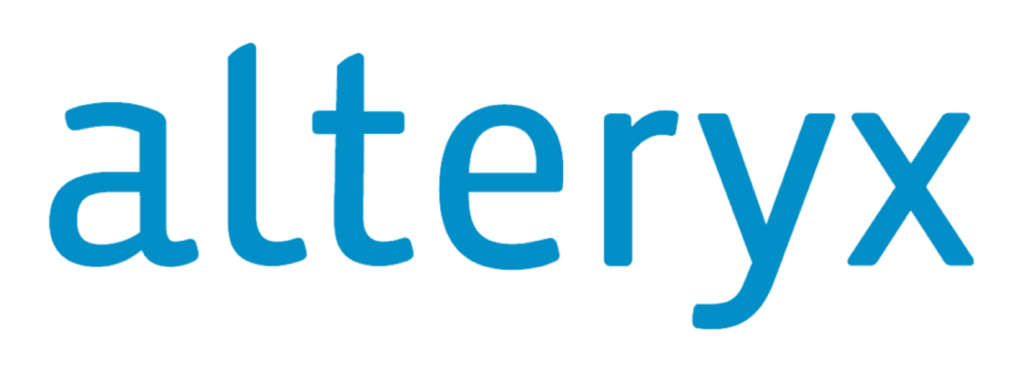 Alteryx Free Trial Alteryx Training Alteryx Resources Alteryx Webinars Schedule a Demo Alteryx Server
Alteryx Free Trial Alteryx Training Alteryx Resources Alteryx Webinars Schedule a Demo Alteryx Server
What is Alteryx? | What is Alteryx Used For? | Who Uses Alteryx? | Can Alteryx Replace Excel? | Why Should I Care? | Why is Capitalize So Jazzed About Alteryx? |
What is Alteryx?
Business Answer:
Alteryx is a software platform that allows people to work with data more easily. Alteryx makes accessing, cleansing, testing, combining, analyzing, and outputting data MUCH easier than Excel, SQL, Power Query, or similar tools. Alteryx allows teams to build data processes in a more efficient, repeatable, less error-prone, and less risky way. The process can be in any department where data requires manipulation, consolidation, testing, or analysis. So everywhere!
A few examples across departments we’ve worked on include:
- Accounting for reconciliations and consolidations.
- Finance for forecasting and combining data from multiple departments.
- Audit to test large data sets, look for anomalies/fraud, and continuous audit.
- Tax for analysis, apportionment, state/federal filings, etc.
- HR for predicting attrition, salary adjustments, and powering executive dashboards.
- Marketing to combine data from dozens of online platforms and A/B testing.
- SalesOps for commission reporting and territory planning.
- Supply Chain/Procurement for analyzing vendors, cost, and timing.
- IT for speeding up queries, reducing the burden of SQL, and populating databases and BI tools.
Unlike many tools, Alteryx is easy for business users without an IT background to use. In our experience, companies that embrace Alteryx have higher employee engagement and get far more efficiency from their analysts in every department than companies that do not. We think of Alteryx as a power saw for teams that have always used hand saws
Technical Answer:
Alteryx is a software solution that allows users to quickly access, manipulate, analyze, and output data. This can be done in a one-off manner or, more commonly, the process (called a “workflow”) is something people use on a recurring (daily, weekly, monthly) basis. The way Alteryx builds workflows becomes a form of process documentation allowing users to see, collaborate on, support, and enhance the process. Data can be read and written to files, databases, and APIs. Alteryx also comes with functionality that enables predictive analytics and geospatial analysis.
What is Alteryx Used For?
Business Answer:
Alteryx is used to answer business questions that are time-consuming, manual, error-prone, risky, and maybe impossible with the alternative tools being used. Alteryx can be used to speed up your processes (accounting close, tax filings, regulatory reporting, forecast creation), automate your processes (reconciliations, consolidations, marketing workflows, system integrations, continuous audits), and enable predictive and geospatial solutions. While other tools make the same claims, Alteryx is one of the only tools that enable business users and analysts instead of just the IT teams.
Technical Answer:
Alteryx is used for access, manipulation, analysis, and output of data. The platform is very robust and can be used in virtually any industry or functional area. People typically use Alteryx to more quickly and efficiently get data processes completed and automated. The processes range in size and complexity and can include:
1. Combining and Manipulating Data Within Spreadsheets
Alteryx can be used in situations where VLOOKUPs, COUNTIF, SUMIF, INDEX MATCH, pivot tables, and other complex Excel data manipulation occurs. Alteryx can handle data larger than Excel, it’s typically faster than Excel, and the process is much simpler to see and understand. People who are strong in Excel data manipulation should strongly consider learning Alteryx.
2. Database Access and Supplementing SQL Development
Alteryx has an incredible set of database connectors and functions, including many functions that your average database does not. Alteryx can work with data from multiple databases or areas within a database. It allows users to filter, sort, calculate, etc. as they would commonly do in SQL or an ETL tool. Alteryx brings this capability to more users because it is easier to learn than SQL, and it creates a documented process flow that nearly anyone can follow. Alteryx can push the work to the database or complete the work within the Alteryx engine. There are also capabilities for predictive analytics, geospatial analysis, reporting, and other functions not typically native to a database. Users with basic SQL skills but find it cumbersome, users who need more power across many databases, and users who require more capabilities than their database possesses would be good candidates for evaluating Alteryx.
3. API, Cloud, and Hybrid Access
Alteryx can read and write data in databases, files, REST APIs, and a myriad of other locations (with the correct permissions). When a workflow is published, you can also call a workflow through a REST API to start it.
4. Data Science
Alteryx provides a multitude of pre-built predictive models and the ability to add R or Python code directly within a workflow. For the citizen data scientist with limited programming skills, the pre-built models are extremely useful. More advanced data scientists typically use Alteryx to simplify the data access, preparation, and blending so they can send the data to a custom predictive model. Alteryx also has the capability to publish models built so they can be put into production and used by the enterprise.
5. Geospatial Analysis
Locations and distances are important factors and are difficult to manipulate. Alteryx gives users drag-and-drop tools to geocode, plot, and map locations, customers, competitors, or anything that has a location (employee, truck, pipeline, etc.). Alteryx can group items with custom polygons, calculate distances and drive times, find the closest object to a point (ex. closest truck to distribution center), and it allows users to apply the geospatial data in their analysis. User can also output their geospatial analysis to ESRI, Tableau, GeoJSON, and many other locations.
6. Reports and Dashboards
The output of most data related-processes is a report, chart, or dashboard. Alteryx has built-in tools that enable the building of reports and dashboards. Still, more commonly, it passes data to databases, reporting tools, and visualization tools that are widely adopted within an organization. Alteryx can power reports and dashboards in Tableau, Power BI, Qlik, ThoughtSpot, Cognos, MicroStrategy, Business Objects, or virtually any other tool within an organization. Because Alteryx is data source and target agnostic, the danger of vendor lock-in is significantly reduced. Many clients use Alteryx with different business intelligence tools depending on the use case and department.

Who Uses Alteryx?
Business Answer:
Thousands of companies, including single-person start-ups to the largest organizations in the world. Alteryx customers span every industry and users are found in every functional area. Why?
Alteryx is great for people who need quick access to data so they can get answers faster and in a more repeatable way. Marketing, sales, accounting, HR, and every other department get questions from executives, managers, employees, other departments, vendors, customers, government, regulators, auditors, and more. Your organization likely loses hundreds or thousands of hours per year, just getting data together for people to make decisions. Anyone who dumps reports to Excel for manipulation or anyone who spends time pulling data from databases could probably save enough time with Alteryx to justify the purchase. When you begin saving 20 hours per person, per month, per department, you can see how the results compound. When the time savings are combined with faster answers, processes that are easier to support, and it is all documented, the value increases substantially. Alteryx is a no-brainer for nearly any organization and/or department that works with data.
Technical Answer:
Many who look at Alteryx from an IT standpoint will make a comparison to ETL. That is not a bad correlation, but it is important to remember that its primary audience is data analysts. Think of how Tableau opened up the world of business intelligence to business users. It was the first tool in that market to really focus on the business units outside of IT users; Alteryx offers similar freedom to business users.
Alteryx has taken a similar approach and is upskilling teams across the enterprise so they can do things more quickly by replacing error-prone manual processes. Technical people may fear that Alteryx is creating the danger that users will do processes that should be handled by IT. Pro tip: The users are already doing those processes! They do the processes, by dumping to Excel, Copy and Paste, VLOOKUP, SUMIF, Pivot, Chart, and finally, Copy and Paste to PowerPoint.
If you are in the technical arena, we need to help upskill our users so we can focus on the new challenges that require advanced technologies. IT people always want a fully documented set of requirements. Alteryx creates a visual workflow that has all the data and test cases baked right in. Once the user has the workflow fully built out, IT can look it over and decide if it should live in the business unit or be hardened for the enterprise!
As a “recovering” IT person myself, with quite a bit of Alteryx experience, Alteryx is my go-to tool. Alteryx makes it incredibly easy to grab, manipulate, and analyze data. I rarely find I need anything else except a good visualization tool to show off my findings (if needed).

Can Alteryx Replace Excel?
Business Answer:
No. Alteryx can replace most/all manual Excel “processes.” If your company or team has reports, queries, or files that they manipulate, join, and perform calculations on in Excel to power reports, reconciliations, audits, or other complex data processes, Alteryx can probably automate it. You may also use Alteryx for one-off questions when data comes from a few places, and Excel was formerly the tool of choice. For quick data input to add a few items together, you will probably still use Excel. If you create invoices, price files, quotes, or other reports that require manual input without a data source, Excel will probably still make sense. There are many tools in our toolbox – trusty Excel and the 10-key calculator will be around for a long time. Alteryx becomes the power tool that makes us 100x faster.
Technical Answer:
Sadly, no. Excel will never die. Resistance is futile. Do your best to empower people with better tools, so Excel is used only when needed instead of for everything. Excel shouldn’t be running your company, but it probably is!
Why Should I Care?
Business Answer:
No matter what your company does, there are processes that take too long, and data you cannot get fast enough. Vendors, suppliers, customers, and governments give and expect more data than ever. Internal teams collect more data, share more data, and ask more questions than ever. Markets are more competitive, and margins are smaller than ever, so we need accurate data. Everyone expects immediate responses and very high accuracy. If your team is not embracing technology and is not working on continuous improvement, you are probably in trouble. Alteryx is not a magic bullet, but if your company is as reliant on Excel, SQL, and manual processes as we have seen in every industry and functional area across the globe, you should at least give it some strong consideration.
Technical Answer:
You cannot support every request from every team in your company. You are not resourced for it, and you never will be. Your business users understand their jobs far better than you ever will. They need to get things done quickly, and you can help them tremendously by helping them level up. Not everyone will become a data guru, but anyone who understands VLOOKUPS, SUMIFS, and can manage the zillions of Excel sheet references they work with has a lot more to give. Teach people to fish and be open to their feedback. Some tools are too difficult, and users won’t adopt them. Some tools are too slow, and users won’t adopt them. Some tools are too simple and won’t work, so users won’t adopt them. Don’t give up on your users. There are tools out there that users will adopt, and we believe it is IT’s job to find them and evangelize them. If you agree with this, you should explore Alteryx with your business users.

Why Is Capitalize So Jazzed About Alteryx?
Alteryx fills a need that no other tool has been able to touch. It empowers users to do things that they have either relied on Excel for or have had to ask IT to develop. More importantly, users adopt the tool eagerly and empower their organizations like nothing else we see on the market.
Capitalize Consulting is here to help organizations through digital transformation and automation in the data realm. Contact alteryx@capitalizeconsulting.com for more information or to schedule a demo!
